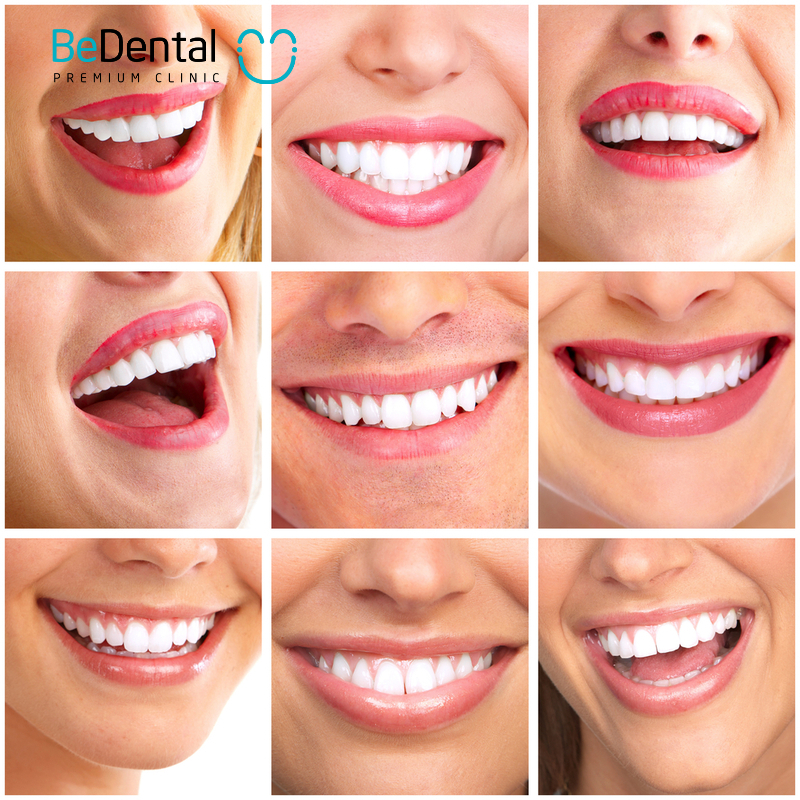Lifting Bite in the process of wearing braces is often performed to treat issues such as deep bite, open bite, and crossbite. So what is Bite Lifting? Let’s explore in the article below.
What is Bite Lifting?
What is Bite Lifting? Bite Lifting is one of the complex and challenging situations in orthodontics when a patient has jaw bone development beyond the norm, causing imbalance in the bite.
This incorrect bite condition not only affects the aesthetics of the face but also significantly impacts chewing function and speech.
See more: Do braces cause toothloss
In this case, the dentist will recommend orthodontic treatment to correct tooth alignment and combine it with advanced bite lifting techniques for better effectiveness.
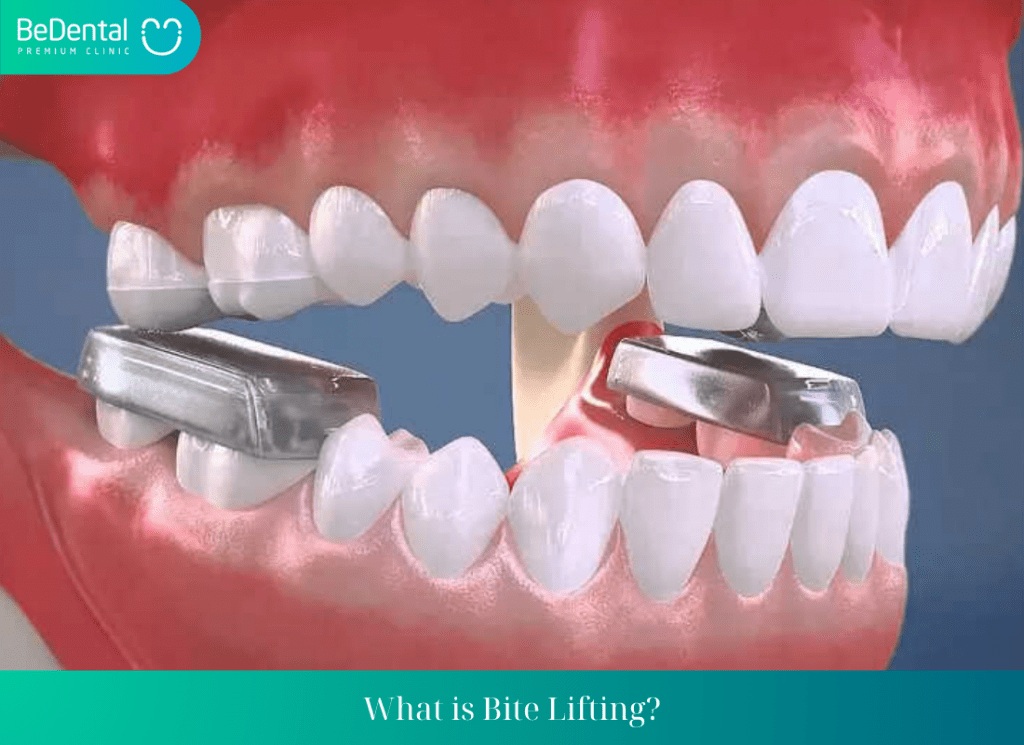
In addition to basic tools such as braces wires and bands, Bite Raising in the process of wearing braces involves using special instruments like jaw elevators and bite blocks to place on the positions of the teeth and jaws, or behind the back teeth, to adjust the upper and lower jaws to achieve the correct bite alignment.
This procedure is carried out to:
- Adjust the bite in cases of deep bite and crossbite to avoid damage to the teeth that have been braced.
- Support the movement of teeth to occur more quickly and easily.
Bite Raising in the braces adjustment process ensures that tooth alignment is done effectively while also ensuring balance and proper function for the jaws.
See more: Zirconia Bridge
Effects of Bite Raising in braces
In addition to asking, “What is Bite Lifting?”, customers often seek information about the effects of Bite Raising in braces. Bite Raising is applied to patients with deep bite or crossbite conditions. This technique can also be performed for individuals with teeth grinding habits.
To determine the best treatment plan, patients should consult their dentist and undergo X-rays. A deep bite occurs when the upper teeth cover most or all of the lower teeth when biting. In severe cases, the lower teeth may contact the inner gums of the upper jaw instead of the upper teeth. Without Bite Raising intervention, this condition can impair chewing, speech, and aesthetics.
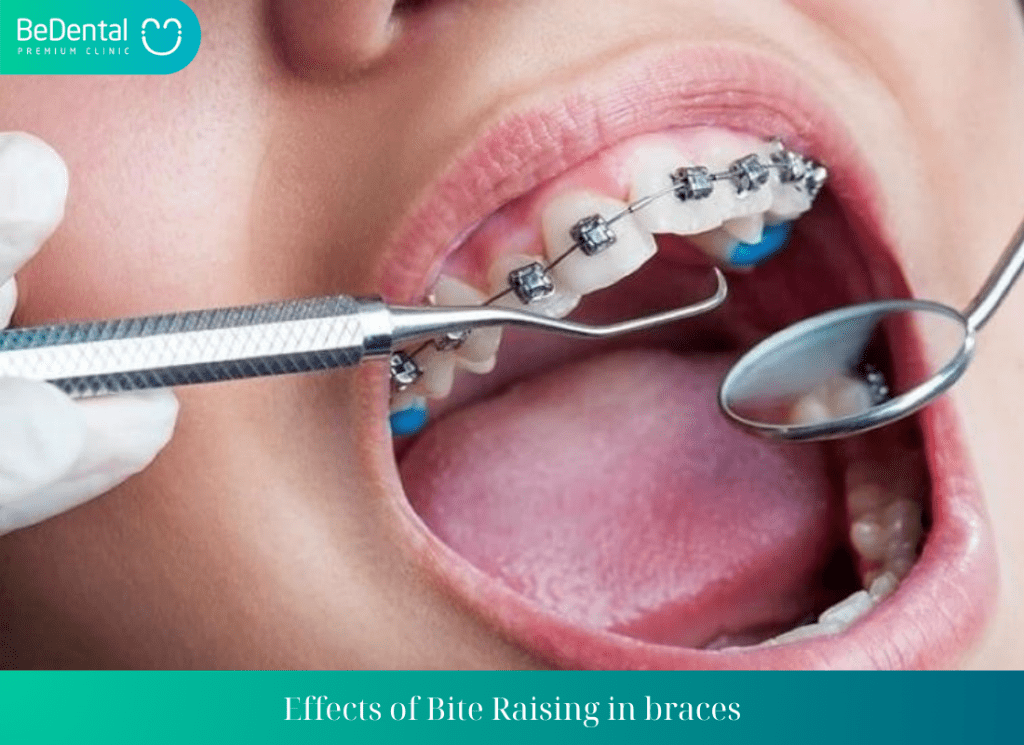
In braces treatment, skipping Bite Raising can cause the lower brackets to contact the upper jaw, leading to gum damage and reduced treatment effectiveness.
Bite Raising also addresses crossbite, marked by asymmetry between the upper and lower teeth or a curved line from the nose tip to the gap between the back teeth.
See more: Stages of wearing braces
How is Bite Raising in braces performed?
In addition to asking, “What is Bite Lifting?”, customers often seek information about the how is Bite Lifting in braces performed?
Using jaw elevators:
Jaw elevators are a technique used to treat open bite conditions. According to dental experts, open bite often occurs when the upper teeth protrude downward deeply, preventing the patient from closing their jaws properly.
To address this issue, dentists will attach a rectangular block to the lower teeth group, while providing a protective layer for the upper teeth. The Bite Raising block is usually made of plastic material.
Bite Raising through teeth using a block (posterior Bite Raising):
To treat crossbite, patients are often required to use a special block. The Bite Raising block prevents the upper and lower teeth from making contact with each other from their original positions.
See more: Zygoma implants
This also means that the upper back teeth will no longer touch the lower back teeth as before. This method not only helps limit bracket slippage or detachment but also minimizes the crossbite condition.
Dentists typically use a special solution in dentistry to coat the surfaces of the back teeth and create a Bite Raising block.
Then, the patient will be asked to bite for a short period, allowing the solution to form and shape. Dentists may use lasers to shape and harden the solution, creating a barrier between the patient’s upper and lower back teeth.
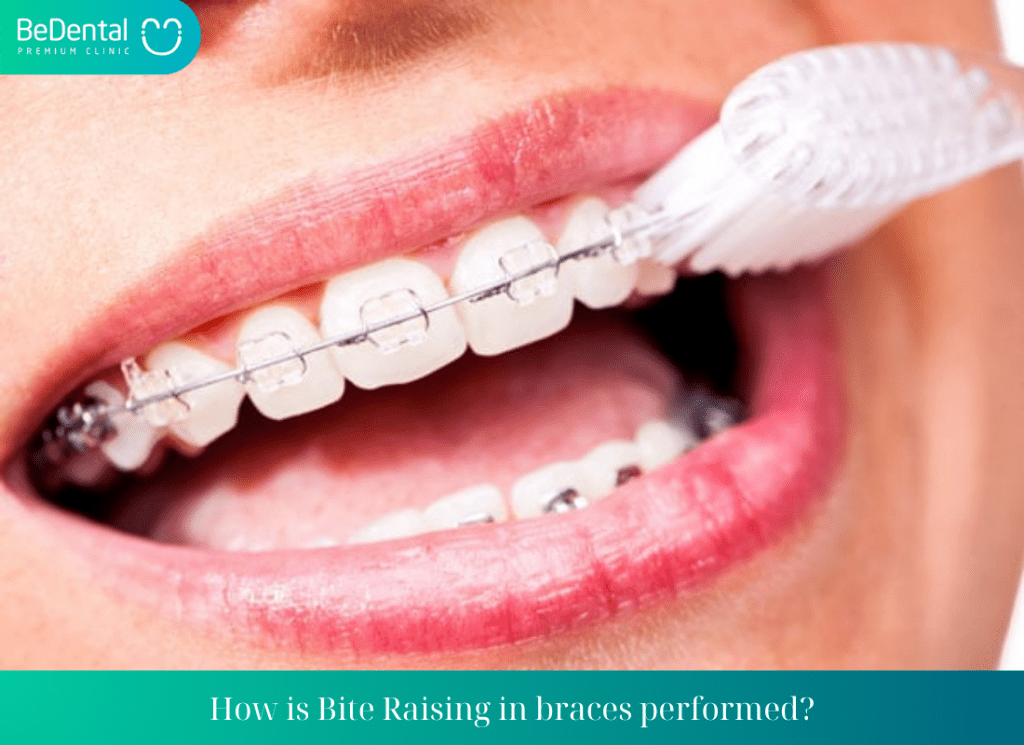
Using jaw elevators for anterior Bite Raising:
For individuals with deep overbites, dentists often utilize Bite Raising techniques. Deep overbites occur when the upper teeth cover a portion or all of the lower back teeth.
Bite Raising blocks for overbites are typically made of plastic, rubber, or small metal. This tool is attached to the back of the lower back teeth to prevent the lower teeth from being pushed too high during chewing.
To avoid damage to the Bite Raising block due to strong impacts, especially in severe overbite cases, the Bite Raising block is attached to the back of the canines.
See more: Signs of gum recession during braces
Specifically for individuals undergoing orthodontic treatment with braces, the Bite Raising block is attached along with the braces. It is worth noting that if the patient chooses clear aligners for orthodontic treatment, the Bite Raising block will be directly attached to the aligners.
How do Bite Raising blocks look?
In addition to asking, “What is Bite Lifting?”, customers often seek information such as “How do Bite Raising blocks look?”. Bite Raising blocks are small square blocks made of plastic or composite materials. These blocks are securely attached to the back of the back teeth or the upper surface of the upper teeth.

Typically, Bite Raising blocks are designed in metal-like or opaque white colors for easy removal later on. Dentists will try to adjust the position of the blocks so that they are not easily visible to others, even when the patient is smiling or talking.
Integrated Bite Raising in Invisalign:
In the Invisalign system, there are areas with convex square shapes that play a similar role to traditional Bite Raising blocks. However, unlike regular Bite Raising blocks, the Bite Raising part of Invisalign is hollow and integrated into the aligners. The Bite Raising block of Invisalign is believed to provide more precise impact and a more comfortable feeling compared to traditional orthodontic appliances.
How long is the Bite Raising worn for?
In addition to asking, “What is Bite Lifting?”, customers often seek information such as “How long is the Bite Raising worn for?”. The treatment time and methods for overbites will vary depending on the individual’s overbite condition and teeth. Typically, when starting orthodontic treatment with braces, dentists will simultaneously attach the Bite Raising blocks. The treatment time will also vary depending on the severity and complexity of the overbite.
See more: What is orthodontic archwire?
The average time for using Bite Raising blocks usually ranges from 3 months to a year. After seeing balance and changes in the two jaws, dentists may remove the Bite Raising blocks or switch to using other Bite Raising appliances.
Is Bite Raising in braces painful?
In addition to asking, “What is Bite Lifting?”, customers often seek information such as “Is Bite Raising in braces painful?”. The process of Bite Raising during orthodontic treatment is not a pleasant experience, especially in the early days of wearing the Bite Raising block. Patients may experience soreness, a feeling of bulkiness, and difficulty chewing.
However, after a few days, this sensation will gradually decrease as the mouth adapts to the Bite Raising appliances. At this point, patients will find it easier to eat and communicate.
Additionally, patients can apply some pain relief measures as instructed by the dentist to feel more comfortable, such as cold compresses, warm compresses, using orthodontic wax, and gum massage. These measures can help reduce pain and discomfort during the Bite Raising orthodontic treatment.

See more: 7 day menu for braces-friendly eating
Notes on Bite Raising
In addition to asking, “What is Bite Lifting?”, customers should know about some notes on Bite Raising. During Bite Raising treatment, it’s essential to follow your dentist’s instructions to ensure faster teeth alignment and avoid oral damage.
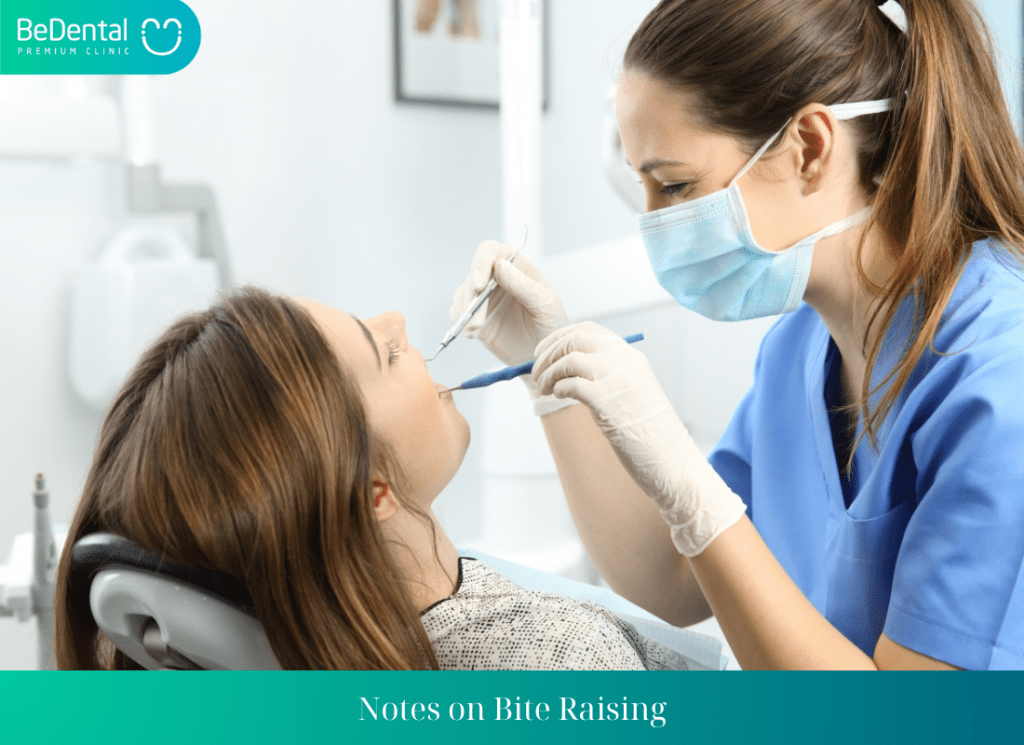
- Maintain oralhygiene: Brush twice daily with fluoride toothpaste, floss, or use dental picks and antibacterial mouthwash. Brush in circular motions to remove food debris.
- Avoid harmful foods: Limit hard, sticky, or extremely hot/cold foods, sugary drinks, and stimulants like alcohol.
- Attend regular check-ups: Report any misalignment or detachment of the appliance promptly for repairs.
- Manage discomfort properly: If you experience pain, contact your dentist for adjustments. Avoid self-removing the appliance or taking medication without guidance.
See more: Dental implants
Here are some tips for those undergoing jaw elevation treatment:
- You can use anti-inflammatory medication (containing ibuprofen) if necessary to help you adjust to jaw elevation.
- Limit the consumption of hard, chewy foods and sugary foods during treatment.
- Maintain regular oral hygiene. Brush your teeth and use antibacterial mouthwash after each meal.
- When wearing a jaw elevation device, the biting surfaces of the two jaws may not fully touch each other. This is normal, and you will adapt after a short period.
- Check the jaw elevation device daily to prevent it from shifting or falling out of place. Contact your dentist immediately if the device becomes detached for a follow-up appointment.
The above article has helped you answer the question: “What is Bite lifting?“. Contact Bedental if you want advice on appropriate methods to have more precious information, we will provide free help 24/7.
Tư vấn chuyên môn bài viết:
BÁC SĨ DƯƠNG THỊ THÙY NGA




